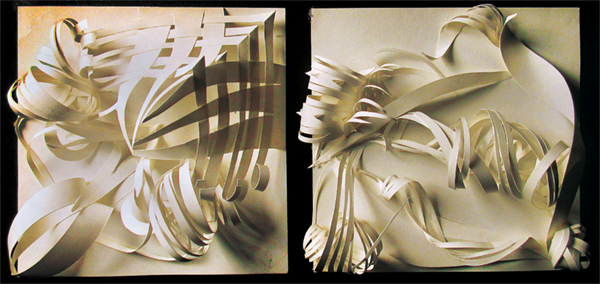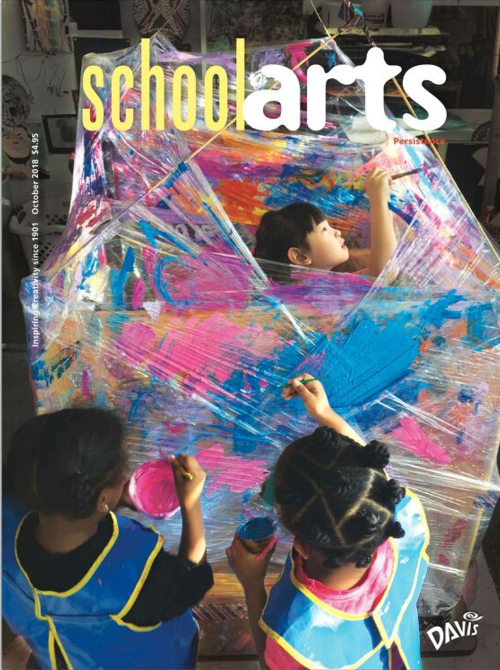
I have seen some amazing work by classrooms inspired by Heather Hansen, a dancer and artist who uses her own body and performance to create large-scale drawings. Her work is very relatable to the classroom and allows so much content to be covered. You can talk about using movement in art, symmetry, and drawing with your whole self, as well as drawing as a performance. Having students mimic Hansen’s process gets them out of their seats, moving around the room, smearing chalk on their hands, and fully engaged with making bold marks on a large surface.
When viewing Hansen’s work and following her drawing process, it’s difficult to find fault with wanting to adapt it to the classroom. But, what if we moved past just mimicking what she does and found a new way to be inspired by the process to create additional works with different media?
Starting with Drawing
This was a question I posed as I prepared my high-school 3D students to create their own Hansen-inspired drawings. Students worked in pairs and individually, swinging their chalk and charcoal filled hands around the large pieces of paper taped to the floor. There was much laughter during the process and some confusion, because after all, we were in a 3D class, and instead of working sculpturally, students were creating these large-scale symmetrical drawings by engaging their whole arms.
Working from Abstracted Forms
After working through the collaborative and individual drawings that followed Hansen’s process, I asked students to come up with a series of thumbnail sketches that interpreted the marks made in these large-scale drawings as symmetrical and asymmetrical relief forms. Most students in the class were used to working from life and in the realm of objective art that stems from realism. Asking them to work from these more abstracted forms and develop them into concepts for relief paper sculptures proved an interesting and new challenge. This divergence from Hansen’s process helped students see that we can use a variety of artists’ works to make new understandings of ideas with different media and approaches.

Working in Three Dimensions
Once sketches were complete and critiqued by peers, students each selected one symmetrical and one asymmetrical 3D piece to complete. Before beginning their final works, I encouraged students to use the white paper I gave them for their sculptures to play with ideas stemming from their selected sketches, making adaptations and edits as they discovered new ways of making the paper curl, bend, fold, and intersect. Using these paper-sculpting techniques, students completed their sculptures and made edits based on process critiques before mounting their work onto black presentation board.
Outcomes
This exercise of adaptation demonstrates to students that they can be inspired by artists without having to copy their work. It shows them that there are ways to approach art-making that may be outside of their comfort zone. Most important to me, it allows students to see a linkage between 2D, 3D, performance, and collaboration in making art and validates it as a way to form ideas and create work that is layered throughout the process.
Janine Campbell is an art teacher at Byron Center West Middle School in Byron Center, Michigan. JanineTCampbell@Yahoo.com
NATIONAL STANDARD
Creating: Conceiving and developing new artistic ideas and work.
WEB LINKS
Byron Center West Middle School
View this article in the digital edition.



